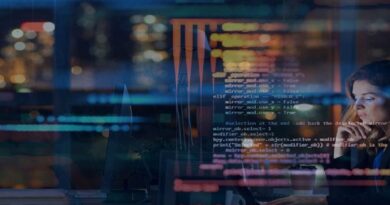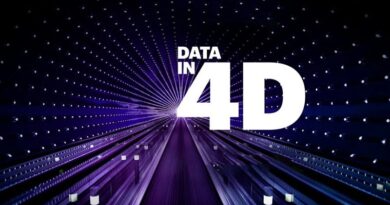Beyond the horizon: Navigating the bridge between today’s tech and tomorrow’s AI
On the calendar, a year has 365 days. But in the world of AI, it often feels like every month brings a year’s worth of new innovation. This kind of speed can be exciting. However, the level of change required to take advantage of the increasing innovation invokes a range of emotions that ask us to both predict the future and try to place ourselves in this new future. This tension is being faced by every business executive, as well as every individual whose day-to-day role will be impacted by AI.
As someone who closely tracks technology history and technology trends, I’m constantly asking myself if the latest headline is revolutionary or just incremental. If history has taught us anything, it’s that there is always a distinct “before” and a distinct “after” whenever there is revolutionary change. I truly believe that AI’s impact will be revolutionary, and the actions we’re taking now with AI will define the world “after” its introduction. There’s still time to own and shape that result, but it’s going to require us all to take bold and intentional steps. Those bold steps should be focused on enhancing your expertise, not replacing it.
Every new technology revolution has brought both excitement and fear. Fear of the unknown. Fear of potential impacts. And fear of how individuals might need to change. People tend to avoid change, but as technologists, we’ve learned that change is the only constant in our world, and we must embrace it. We’re constantly seeking the “next thing,” and we’re now at an inflection point where technologists have an opportunity to model change-leadership. More than any other group, we have the experience to know that there will be unknowns with AI. That the initial versions of AI won’t be perfect, but our adaptive and curious nature should be pushing all of us to want to make it better.
Let me put those fears into a different context. When was the last time you mailed a letter for a business purpose? When was the last time you used a phone with a cord attached to the wall? When was the last time you purchased a boxed operating system? When was the last time you worried about the stability of a website running Linux or Apache or MySQL? When was the last time you thought twice about requesting a ride using your smartphone? Every one of these revolutions (broadband internet, the web, the cloud, mobile computing) was filled with fear, with uncertainty. But the enthusiasm and success from the possibilities far outweighed the fears of the unknown.
To bring this very close to home, very few technology revolutions created as much fear as open source software. The established industry feared it. The potential users feared adopting it. The ecosystem didn’t understand it. Unsecure code. Unknown contributors. Undefined support models. Unestablished business models. The list of unknowns was longer than the first lines of code. And even with all of that, the curiosity endured. The possibilities improved. The communities that organized around it expanded. And the technology outcomes have been significantly better than anyone ever expected. Last year alone, there were nearly 5 billion open source contributions made around the world. Nobody could have ever predicted how widespread open source would become, nor could they have imagined the new ideas that blossomed.
We fully expect that open source communities will continue to play the most significant role in shaping the future of AI. We know some aspects of open source may have to adapt to the new realities of AI, but Red Hat is committed to finding answers to the unknowns and the fears. But, as with everything in open source, we can’t do this alone. We need to tackle these challenges together alongside the open source community.
At Red Hat, we believe there is more opportunity to shape the outcomes by making the bold choice to engage, to embrace and to push AI forward. We might not have the full picture yet, but as humans always do, we will evolve. We choose to lean into the potential of AI. We choose to actively shape the after, rather than be a passive observer.
At Red Hat Summit, we’re laying out a bold vision to help you bridge your existing world and the new world of AI. We believe that the future of AI is open source. For more than a decade, we’ve helped our customers bridge the existing world and the cloud era, resulting in open hybrid cloud becoming the de facto operating model for companies around the world. Now we’re bridging the hybrid cloud world and the AI world to allow them to amplify their existing capabilities versus trying to replace all of them. And we’re doing it in a way that enables our customers and partners to continue to leverage the innovation of open source, while providing a path that lets them own their pace of change.
This means that we have to enhance our core platforms – RHEL, OpenShift and Ansible – to make them easier to operate, scale and secure. And at the same time, we need to extend our Red Hat AI portfolio to embrace the latest AI innovations, such as vLLM, MCP, Llama Stack and many more. This approach will allow you to amplify what you already have, from infrastructure to automation to applications. AI will help make them easier to use and maintain, and accessible to more people.
For our customers and partners, the bold choice not only requires picking the right technologies but also optimizing your team’s talents and freeing up time for them to work on new ideas and skills. There are so many possibilities with AI, but to unlock it, you need to provide space for your team to unleash their unique creativity.
Just as we shaped the world of open source, we can shape the world of AI. We can move past this moment of uncertainty and fear and bridge the two worlds with the same spirit and principles that drove open source. We’ve done it before, let’s do this again with AI.




